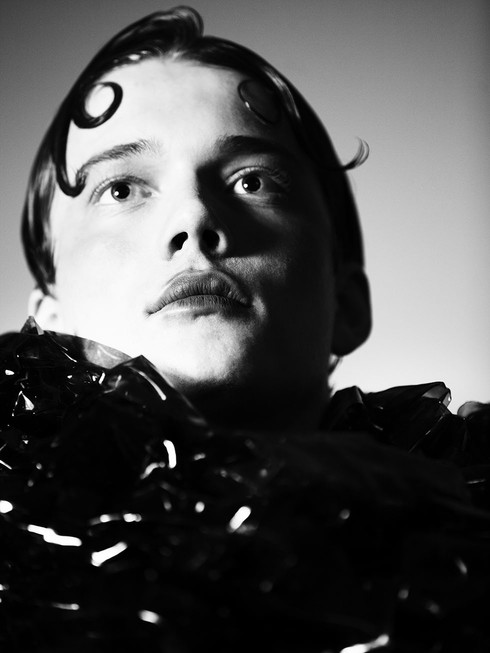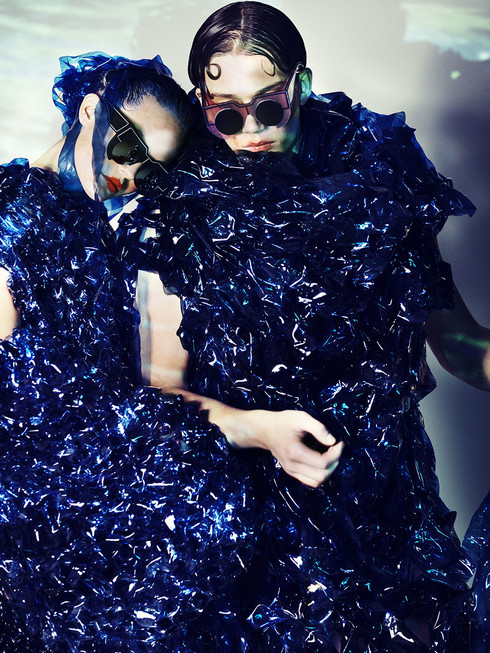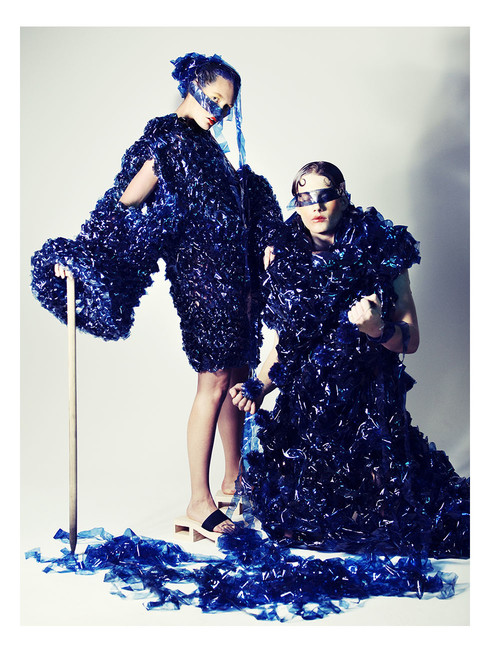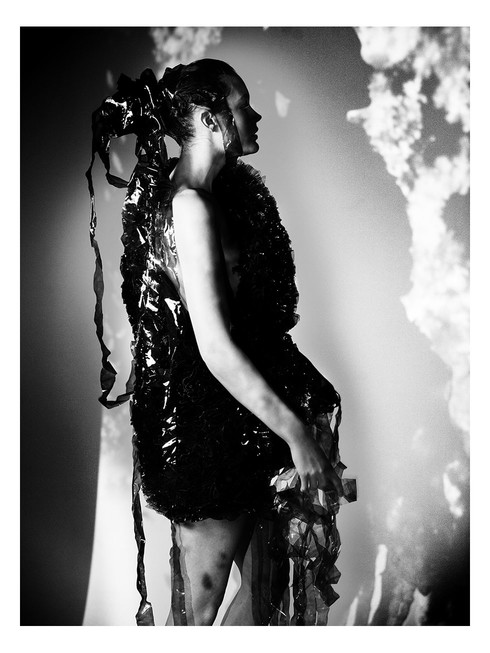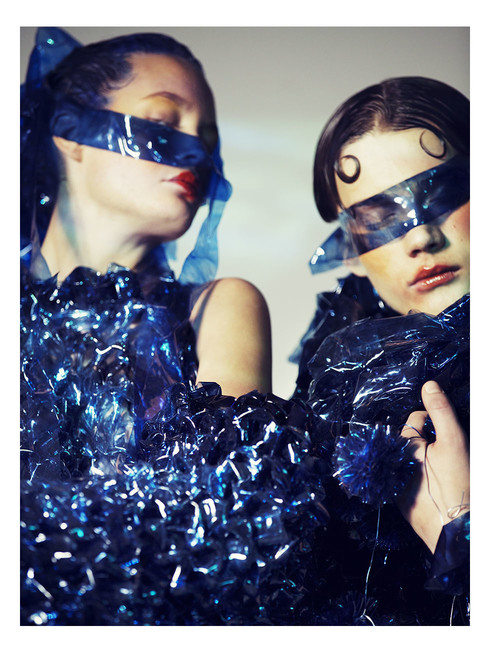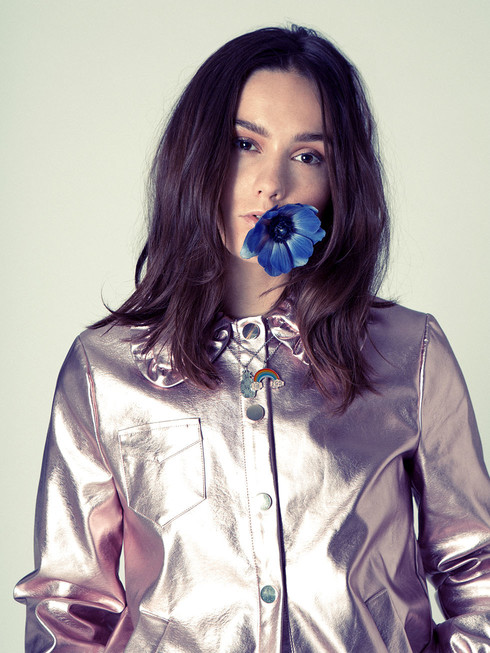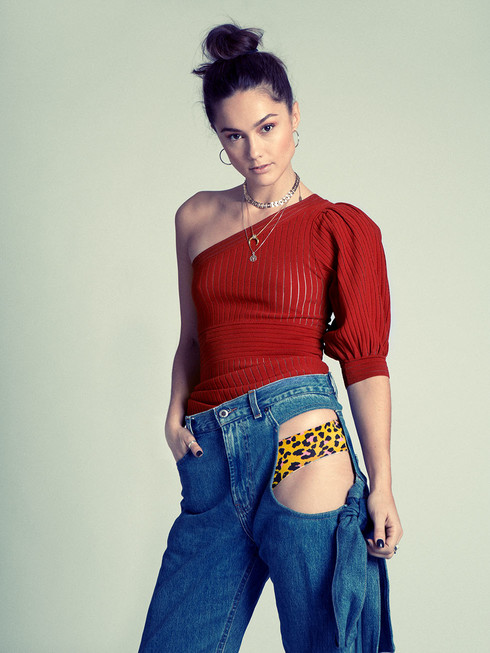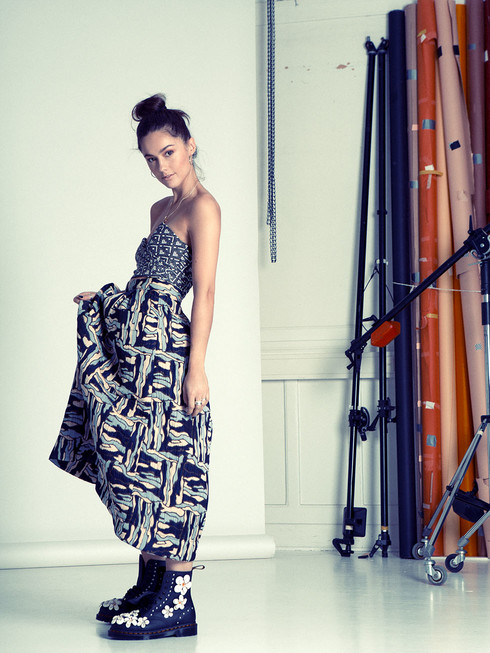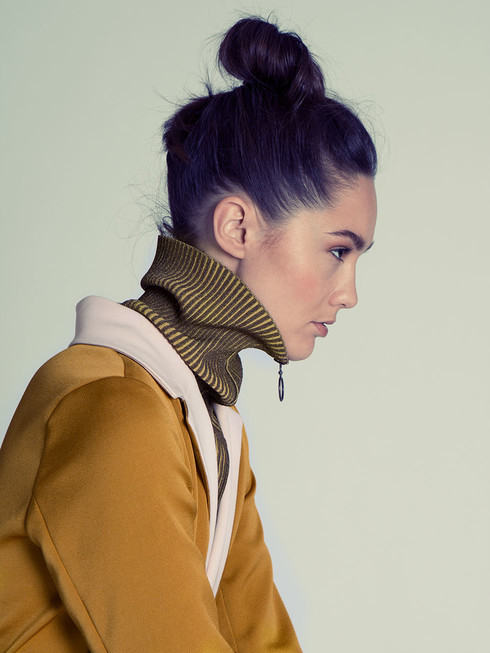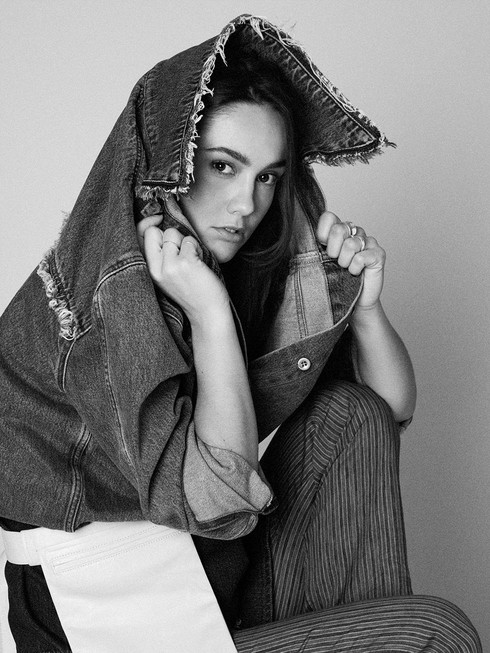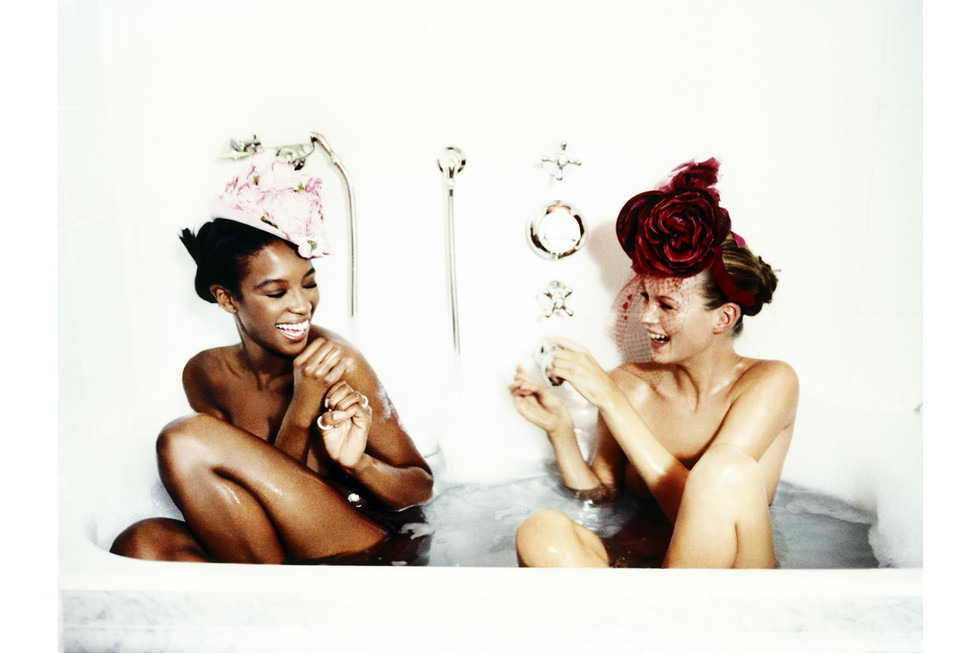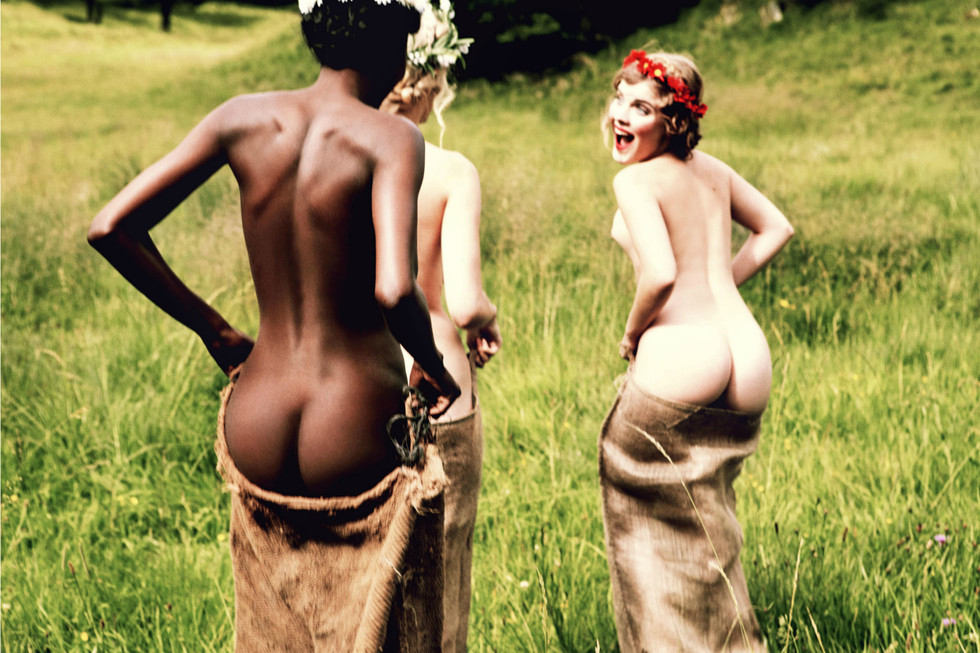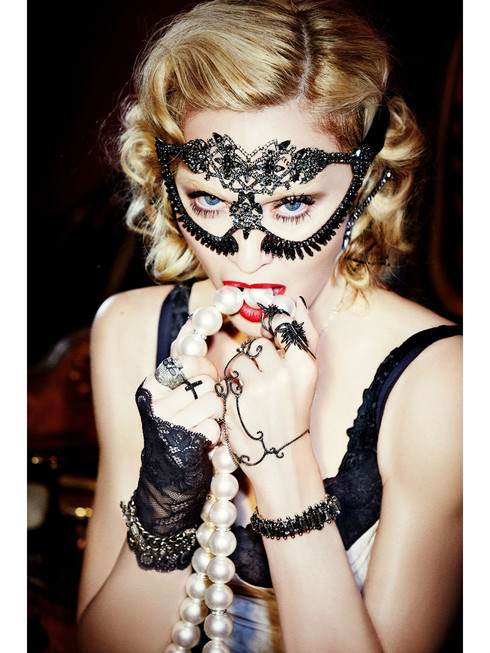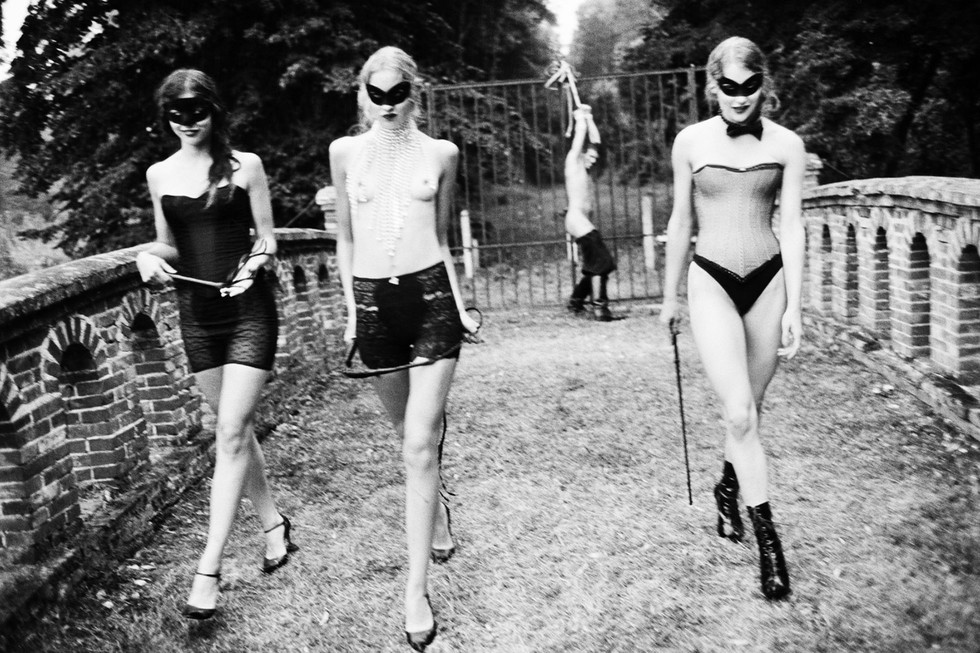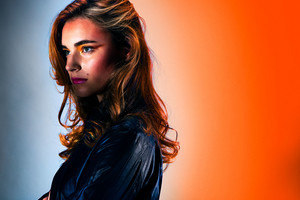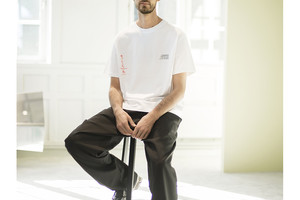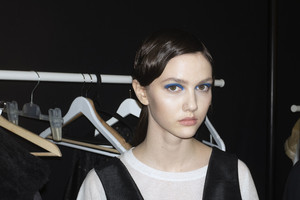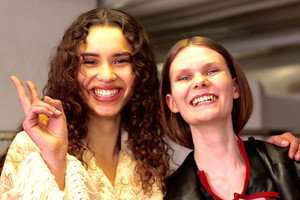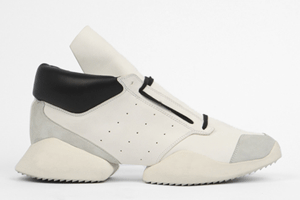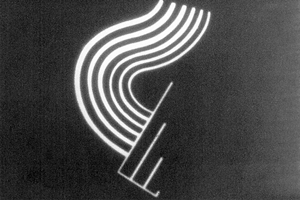Designing Artistic Sustainability of “Unbelonging”
Written by Ksenia RundinSnowy afternoon I meet Jannica Hagfors at Sven-Harry’s art museum in Stockholm to start Odalisque Magazine’s interview series about designer students, who want to share their thoughts on fashion, art, design, sustainability and future.
Being the second-year student, Jannica Hagfors has already participated in a number of designer projects, which have bared her creative spirit. In 2017 she, in cooperation with StureOptikern, had an opportunity to test her skills as a sunglasses designer. The project lasted for three months and Jannica made illustrations for a couple of sunglasses prototypes, what turned into a hybrid between Italian futurism of the 1970’s and industriality of Bauhaus. Her knitwear collection “Unbelonging” looks very modern and cosmic, reminding of Iris van Herpen’s forward-thinking design and sending my thoughts to Vangelis’ “Memories of Green” with its futuristic film noir envisions.
Is there a sustainability thought integrated into your education?
Definitely, already from the mere beginning we have a course in sustainability and different lectures from external actors, such as companies and organisations. Our latest material project - a debut collection - with the main theme called “Spill” resulted in the collection called “Unbelonging”, where I question spill, that arises when something falls outside its context. It is like a water being spilled outside the glass and it does not really belong to the content of the glass anymore. Thus, it is about the feeling of spill, of not really belonging, of no longer having a purpose. Out of that context I chose my material, transparent oilcloth, which has lost its function. I cut the cloth into stripes and then dyed those with textile colour. The colour in the context is not just a colour but it has its own language. Afterwards, I knitted my garments. It is also my way to create awareness about our usage of plastic. In order to become sustainable, we need to change our fundamental values. It should be exciting for humans to become sustainable, what can partly be solved by aesthetics, which needs to be improved. Nevertheless, all the materials are a burden for the environment and it is crucially important to understand.
You have mentioned that the colour is important in your collection. Why?
I have an artistic background, where I used to paint a lot. However, I decided to choose fashion due to its transformation potential, which I consider to be bigger than in art. Nevertheless, my artistic skills help me in my current fashion activity.
What is fashion for you?
For me it is a social phenomenon that arises owing to communication between humans and changes together with the humans. I am very fond of the transformation process in fashion and how through that people can influence each other. Fashion is a silent language, where many people do the same thing but in own way.
Who is a fashion designer? Do you consider yourself being an artist or a designer?
I still see a bit of artist in myself as I am influenced by my past; it is like with handwriting - you write the way you once been taught. However, I call myself a creator, where I create a product that, after the creation process is over, acquires its own life with own artistic identity.
Do you think fashion is a political issue?
It is hard to say, because fashion includes many aspects. I think fashion should be independent. It can definitely become a tool for expressing your political opinion. However, I consider fashion to be a democratic process.
What do you think about cool hunting in fashion? Do you use it in your designing process?
Designing is a kind of living process, where we, students, influence each other through our creativity. We do not look for or follow trends, as we try to build up our own designer identity in the first place. Of course, I cannot say that we are not affected by what is around us. All these influences become more or less integrated in our creative process where our identity is a guiding star.
What is a dream material for you to work with?
I create my material myself through cutting, dyeing and knitting processes. Then I am able to see a new potential in it, like an artist sees it on a canvas. I adore beautiful falls and gracious movements. When I had created my dresses for “Unbelonging” and put one of those on a model and ask her to walk around, I could hear a rustle the dress emitted. The sound as such constitutes own newness.
Do you think it is important for brands to keep an element of their national identity in our age of globalisation?
I think it is up to every brand to decide how they want to market themselves. Cultural heritage is important but does not have to be used by all the brands. I am more into innovation and therefore do not think about that.
How do you think experience economy will affect future design?
We are moving towards sustainable fashion today and people want more and more make a conscious choice in tranquillity instead of entering a crowded store in stress. There is the room for experience, what will more and more prevail in future, I think.
How do you think the digitalisation will affect the designer role in future?
Everybody would be able to turn into designer with own aesthetics using 3D printing and other modern technologies. Nevertheless, I think that craftsmanship, such as pattern making, will still be important as basics.
You have certainly worked with stylists. Could you please describe how these two roles coexist and who really dominates?
Stylist is an extension of the designer role, as he/she takes over at the stage where the other one has completed the work. Designer is too close to his/her creation and thus, he/she might become a slightly speed-blinded in the question of objectiveness. In such a case, the stylist brings the objectiveness back.
What are you working on now?
Now I am working with an aspect of multifunctionality in a garment, where an urgency of sustainability and versatility of aesthetic meet in a certain context.
Could you please describe your cooperation with photographer Linda Andersson?
Our theme is ocean and sustainability, where the purpose is to raise awareness of our overconsumption of plastic, using the material as such in the living context. By putting plastic stripes into the model’s mouth and around her, we aim by means of visual aesthetic to illustrate that we are surrounded of plastic, literally everywhere. Thus, the focus is on the material as such and its overconsumption.


